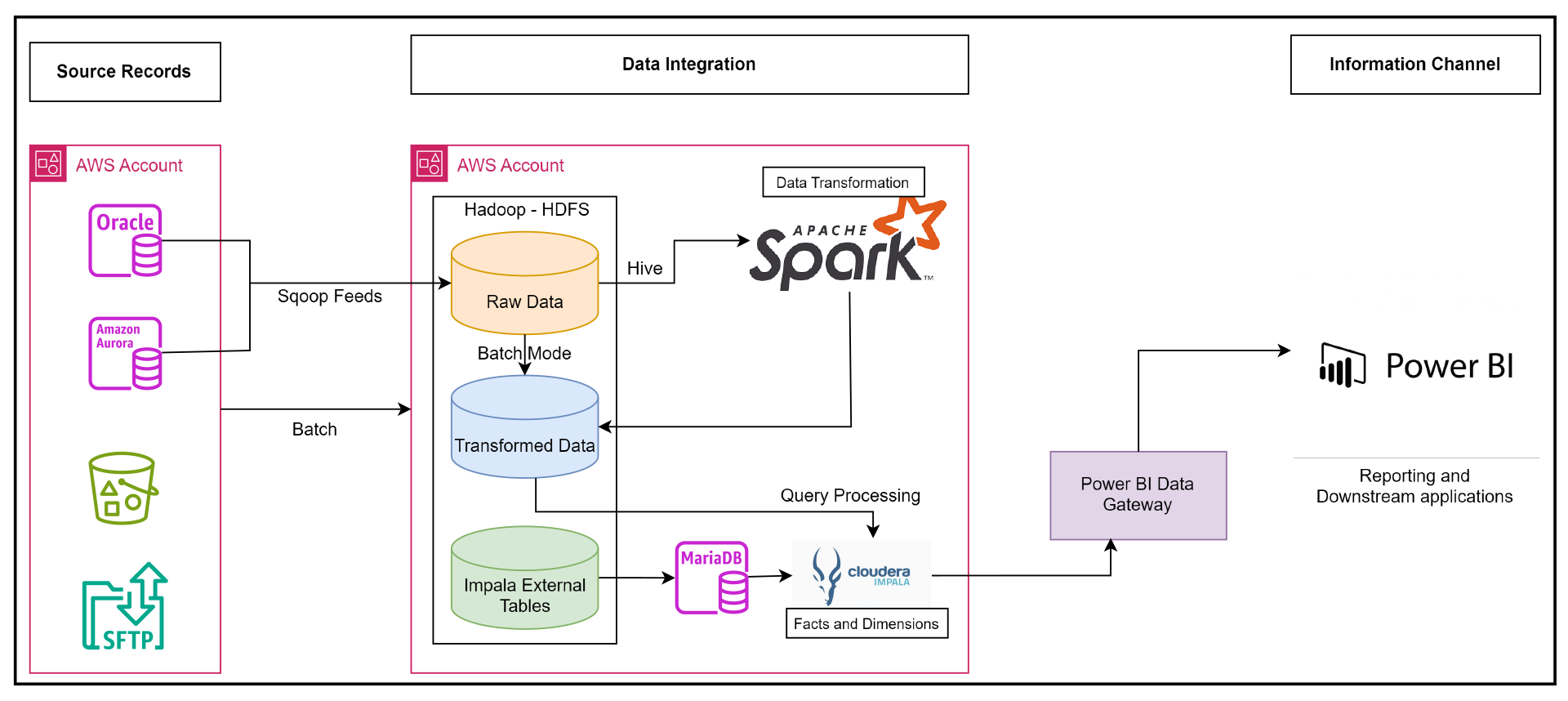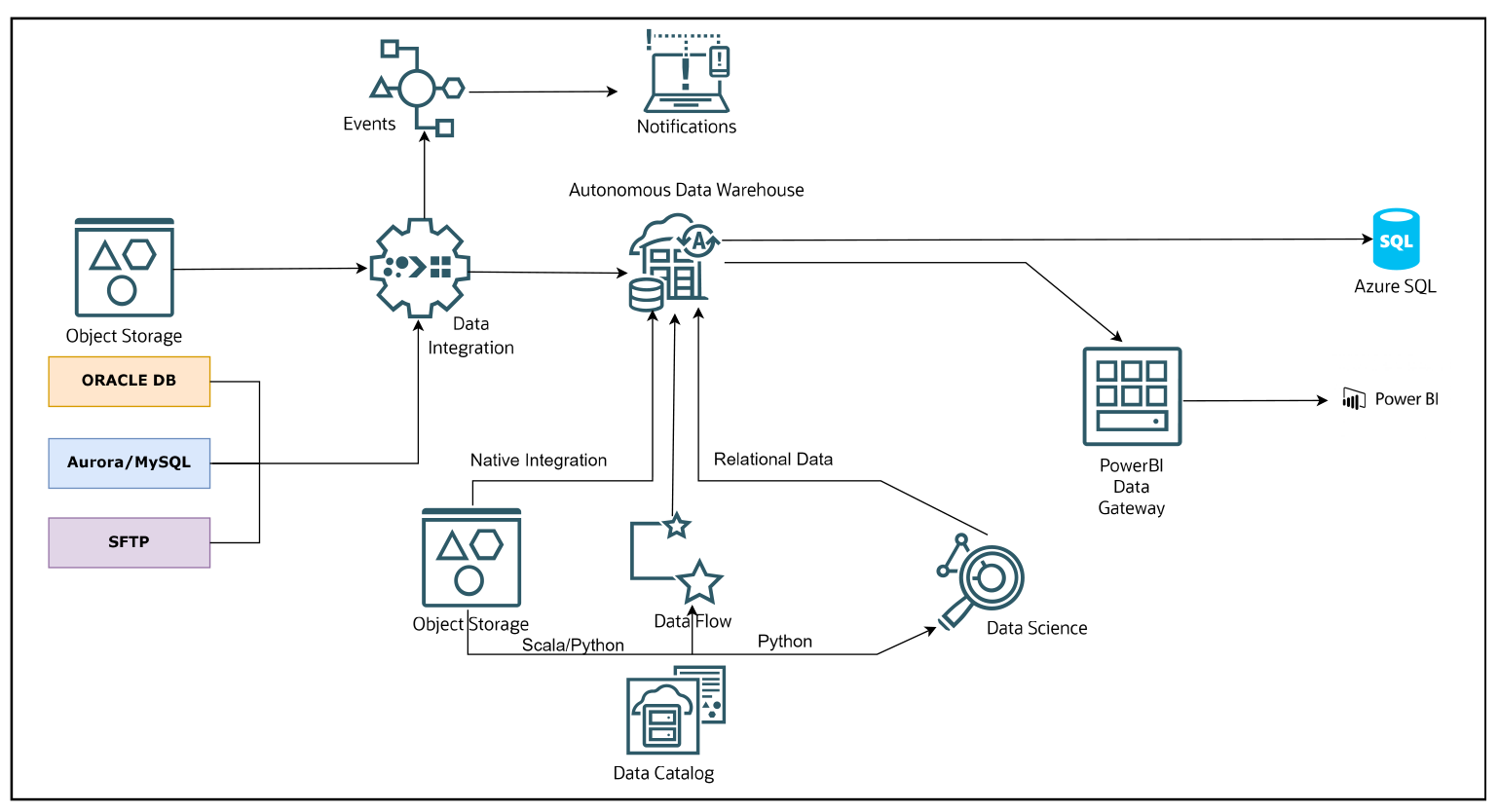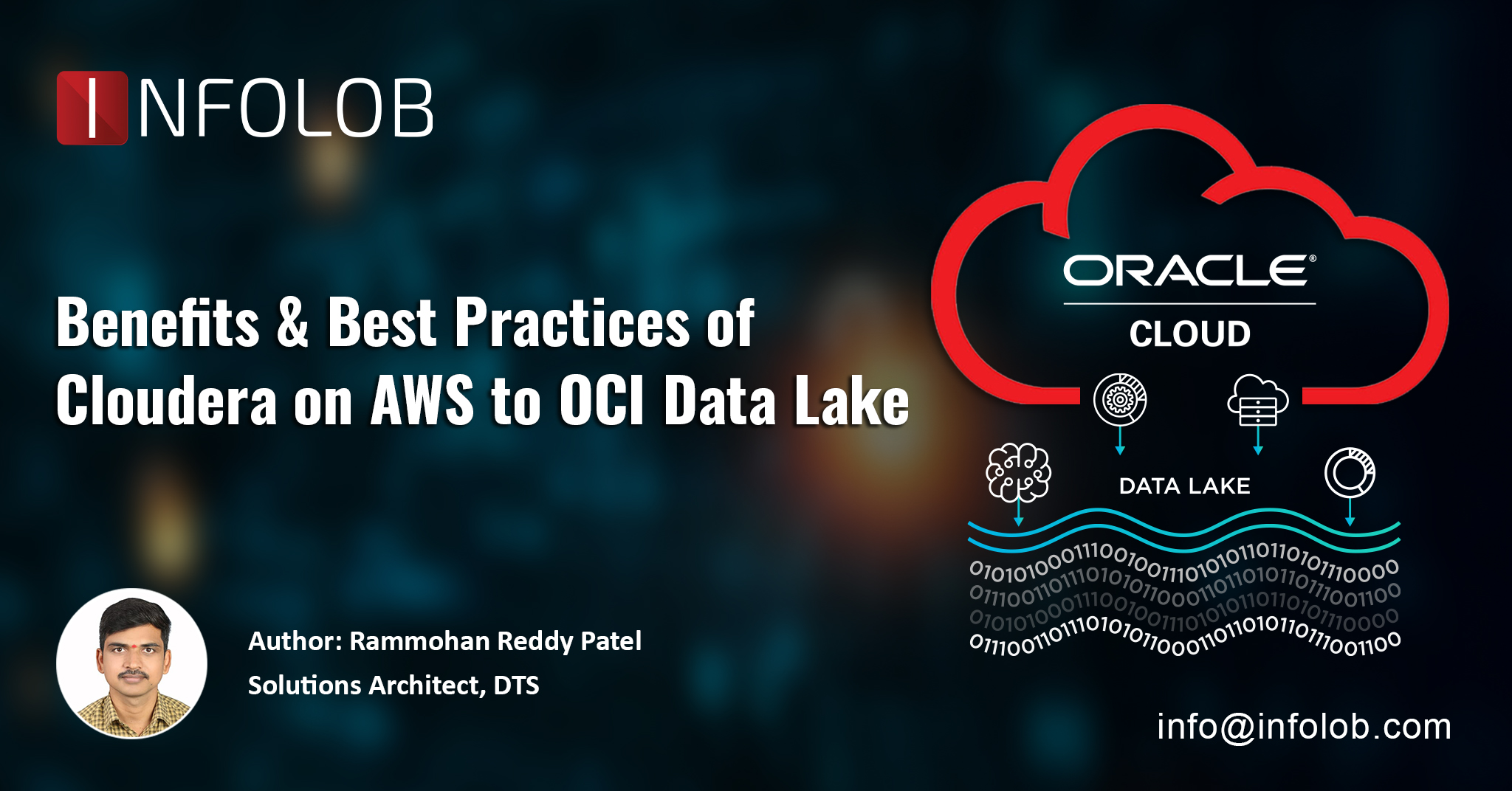Although Cloudera on AWS handles data remarkably, it is still a heavy-going operational model as one must manage access controls and encryptions as well as deal with network latencies within Cloudera Cluster, which leads to performance issues and slower data transfer rates. On the other hand, a secured, cost-effective, and easy-to-manage data lake can be built with the help of Oracle Cloud Infrastructure (OCI), which can integrate with data warehouses, analytical tools, and other OCI applications or products.
Why OCI Data Lake must be Chosen Over Cloudera on AWS?
The reasons are many but when analyzed, OCI data lake delivers promising business outcomes, ensuring optimal performance, security, robustness, and agility. On top of these outcomes, it’s chosen for the following motives:
Integrated Ecosystem
Oracle Cloud Infrastructure provides an integrated ecosystem with a range of services that seamlessly work together. This integration can lead to better performance, simplified management, and improved interoperability.
Autonomous Data Warehouse (ADW)
ADW is a fully managed, cloud-native data warehouse service that automates many aspects of database management, resulting in reduced administrative overhead, enhanced performance, and scalability.
Cost Optimization
Oracle Cloud may offer cost advantages for certain workloads, and you can take advantage of the pricing models and discounts available on OCI. Additionally, optimizing the resources based on workload requirements can lead to cost savings.
Data Integration
Oracle Data Integration services can facilitate the seamless movement of data between various sources and targets. The faster data movement ensures a smooth transition during migration and ongoing data integration requirements.
DataFlow
Oracle DataFlow provides a serverless, fully managed platform for building, deploying, and scaling data processing applications. This can be beneficial for real-time data processing and analytics.
Object Storage
Oracle Cloud Object Storage delivers a scalable and secure solution for storing and retrieving data. Migrating to Oracle Cloud Object Storage can improve data accessibility, durability, and potentially reduce storage costs.
Security and Compliance
Oracle Cloud offers robust security features and compliance certifications. Switching to Oracle Cloud can enhance data security and help in ensuring compliance with industry and regulatory standards.
Scalability
Greater scalability to handle growing data volumes and processing requirements is what OCI data lake capable of. This ensures that your data infrastructure can easily adapt to changes while ensuring uncompromised performance.
Advanced Analytics with Data Science
Oracle Cloud Data Science service enables building, training, and deploying machine learning models. This can be beneficial for organizations looking to leverage advanced analytics and machine learning capabilities.
Managed Services
Oracle Cloud is a set of fully managed services where it reduces the burden on IT teams for routine maintenance and administration. This will allow organizations to focus more on deriving insights from data rather than maintaining the infrastructure.
As OCI data lake has data handling capabilities, a deeper dive into architectural components gives an holistic understanding of how data lake maximizes business value when compared to Cloudera on AWS.
Architectural Components of Cloudera on AWS

Source Data
Below are the listed sources from which Data is ingested to store in Cloudera Data Lake.
- AWS RDS – Oracle
- AWS RDS – Aurora MySQL
- S3 bucket
- AWS SFTP
Hadoop – HDFS
Distributed Files System, a highly fault-tolerant and is designed for low-cost hardware. It provides high throughput access to application data and is suitable for applications that have larger data sets.
Impala
- Impala stores data in storage systems like HDFS, Apache HBase, and Amazon s3.
- It can be integrated with business intelligence tool Power BI using Power BI Data Gateway.
- Impala supports various file formats such as, LZO, Sequence File, Avro, RCFile, and Parquet.
- It interacts with external tables created in Cloudera data lake.
Impala – MetaData
AWS RDS MariaDB – to store metadata in AWS RDS MariaDB for Impala.
Apache Spark
- An open-source, distributed processing system used for big data workloads and provides the framework to up the ETL running. It utilizes in-memory caching, and optimized query execution for fast analytic queries against data of any size.
- A data processing framework that can quickly perform processing tasks on very large data sets and distribute data processing tasks across multiple servers.
Power BI Data Gateway
Power BI Date Gateway acts as a bridge between DataSources on AWS/on-premises and Power BI running on Azure, providing quick and secure data transfer.
Power BI
A business intelligence tool by Microsoft for analyzing and visualizing raw data to present actionable information. It combines business analytics, data visualization, and best practices that help an organization to make data-driven decisions.
Advantages
- Serverless architecture that leverages ADW, DataFlow, Data Integration etc.
- Less/No Management activities at Infrastructure level.
- ADW offers both Compute and storage scaling capabilities thereby reducing costs.
OCI Data Lake Architecture

Autonomous Data Warehouse
- Oracle Autonomous Data Warehouse is the only database optimized for analytic workloads, including data marts, data warehouses, data lakes, and data lake houses.
- Less operational costs are involved while delivering high performance when compared to any other similar offering from other vendors
- Data scientists, business analysts, and non-IT experts can rapidly, easily, and cost-effectively discover business insights using data of any size and type.
Object Storage – Bucket
- This is used to create external Tables with Autonomous Data Warehouse
Dataflow
- Dataflow is used in the current architecture to replace the Spark activities from AWS Architecture post migration into OCI.
- OCI Dataflow is a fully managed Apache Spark service that performs processing tasks on extremely large datasets—without infrastructure to deploy or manage.
- For any ETL operations of streaming data, it has a flexibility to use Spark Streaming in Dataflow.
- Rapid application delivery is enabled as developers can focus on app development instead of infrastructure management.
Data Science
- A fully-managed platform for teams of data scientists to build, train, deploy, and manage machine learning models using Python and open-source tools.
- JupyterLab-based environment is required to experiment and develop models.
- Models are taken into production and kept them healthy with MLOps capabilities, such as automated pipelines, model deployments, and model monitoring.
Data Catalog
- A metadata management service that’s designed specifically to work with Oracle ecosystem. It helps professionals to discover data and support data governance.
- It provides an inventory of assets, a business glossary, and a common meta store for data lakes.
Data Integration
- Pipelines for Data ingestions from multiple data sources are fetched into Data Lake (ADW)
- Powered by Spark ETL or ELT processes, a large volume of data can be ingested from a variety of data assets. The data can be cleansed; transformed, reshaped, and efficiently loaded to targeted Oracle Cloud Infrastructure data assets.
Events
OCI Events Service keeps the track of resource level changes using its own events. In current architecture, we are using to monitor the OCI DI pipelines status to detect any failures in real-time by sending alerts via Notifications.
Notifications
OCI Notifications services help in integrating with OCI Event Rules and notify when any failures in OCI Data Integration Pipelines are detected by OCI Events.
Power BI Data Gateway
Power BI Data Gateway acts as a bridge between Data Sources on AWS/on-premises and Power BI running on Azure, thus enabling quick and secure data transfer.
Power BI
A business intelligence tool by Microsoft for analyzing and visualizing raw data to present actionable information. It combines business analytics, data visualization, and best practices that help an organization to make data-driven decisions.
Conclusion
OCI unleashes the complete potential of the data by breaking silos and divides the data into structured and unstructured. It’s a set of managed services where a data lake can be built at lower costs to uncover new insights and maximize operational models. From data centralization to fine-grained data security, data lake on OCI is an integrated solution for you. Dealing with migrations and building an extensive data lake is one of our successful cloud strategies where we focus on transforming businesses by standing on the closet of perfection. By migrating to OCI, we foster innovation edge that promises exponential growth and extensive business transformation.
For more information or assistance, please write to:





